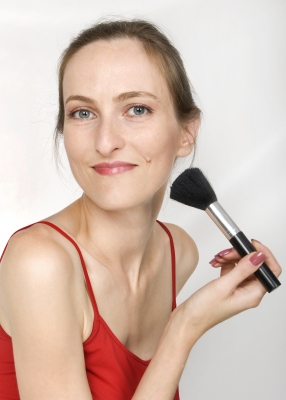
 Think for a moment how you feel when you have the flu. Do you feel confident? Ready to go to work and knock them dead? Happy to go out with friends and have fun?
Think for a moment how you feel when you have the flu. Do you feel confident? Ready to go to work and knock them dead? Happy to go out with friends and have fun?
Cancer patients going through treatments often feel the same way. Even on the days when their energy returns, they may still look sick, which can make them self-conscious about going out into the world.
“If you look sick, people treat you like you’re sick and you buy into it,” says breast cancer survivor Nancy Lumb.
How Our Appearance Affects Our Self-Esteem
“When I look back on it,” says Rayette, ovarian cancer survivor, “the worst thing about losing my hair was that once it happened, I knew I looked sick. Up until then I could hide it. It was like my secret. That was my big fear when I was diagnosed-I didn’t want people to treat me differently. So that was the big disappointment when I lost my hair, as then I knew that I looked like something was wrong with me.”
Many cancer patients feel fairly confident about fighting the good fight until they start noticing changes in the mirror. Up until then we don’t think about it much, but our bodies, faces, and hair have a lot to do with our identities. They are part of who we are. What happens when they start to change. Who do we become?
My aunt Chris, a non-Hodgkin’s lymphoma survivor, had a hard time reaching out for social support during her treatment. She felt she didn’t look her best and didn’t like the idea of going out when she felt self-conscious about her appearance. After receiving some makeup advice, however, her outlook changed.
“‘I can do this!’ I said to myself. ‘I can put on a nice scarf, I can apply makeup to look natural, and I can go out looking good.”
Appearance Shouldn’t Matter-But It Does
In an ideal world, we wouldn’t have to worry so much about how we appear to other people, but researchers have found over and over that we do base judgments on how people look. According to researchers in a 2010 study, “Although we are admonished ‘don’t judge a book by its cover,’ we repeatedly defy that warning as we go about our daily lives responding to people on the basis of their facial appearance. The impact of faces is shown in our impressions of people as well as in our behavior toward them, such as whom we help, whom we hire, or whom we ask for a date.”
Let Makeup Become Your Tool
When you’re going through cancer, makeup isn’t just about looking your best anymore. It becomes a tool to help you maintain your lines of emotional support to your friends and loved ones, which is so important. With a little makeup, you can cover up the flaws that cancer creates on your skin, and still feel confident enough to go to work, go out to dinner, or join your friends for a movie.
If you’re suffering from a lack of confidence or even just the blues because of your appearance, try these few tips and see if they don’t help. Then don’t be afraid to seek assistance from your dermatologist or friendly makeup artist. This isn’t vanity-this is about how you feel, and feeling good helps you heal.
- Facial Swelling: Use foundation a tad darker than your regular skin tone and blend it on either side of the nose, with a lighter color on the bridge. Try a bronzer along your jaw line to slim the look of your face. Apply cold cucumber to the eye area to reduce swelling, and use eyeliner on the upper lash line to lift the eye. A bit of blush under the eyes can reduce the appearance of bags.
- Scars: Use a small concealer brush and cover all areas needed using a yellow or golden concealer. Apply foundation or powder over the top.
- Pimples: A yellow-based concealer applied sparingly is best-work from the center out, and blend well at the edges. Apply after you apply foundation.
- Under-Eye Circles: Use a concealer with a warm (pink) undertone to counteract the blueness. Apply moisturizer first, then apply concealer underneath the lashes.
- Loss of Lashes: Line the upper lash line, smudge it, then apply mascara to the lashes you have left. Avoid using a curler or waterproof formulas, as they can increase lash loss. When your lashes are completely gone, use liner except on special occasions, when you may want to apply fake lashes. Just be careful of the chemicals in the glue.
- Loss of Eyebrows: Determine a shape for your brows-using a stencil is the best way to get your desired shape (rounded or angular, for instance). Use eyebrow makeup shades that most closely match your natural hair color. Use a pencil to dot along the brow line, creating the line of your eyebrow, then take your brow brush and apply the shadow or brow color over the pencil line and throughout the brow area. Brush through both pencil and color to blend.
- Pale, Ashy Skin: Use a bronzer. Test a little on your skin before applying all over to make sure the color matches. Those with cool, pinkish tones do better with shades that have a touch of pink, while those with yellow or golden tones do well with gold, tan, or brown bronzers. Warmer olive tones should choose bronzers with amber or honey undertones, and women of color may want to choose bronzers with burgundy or copper undertones.
Picture courtesy sattva via freedigitalphotos.net.
Leslie A. Zebrowitz and Joann M. Montepare, “Social Psychological Face Perception: Why Appearance Matters,” Social and Personality Psychology Compass 2 (3): 1497-1517 (2008).

